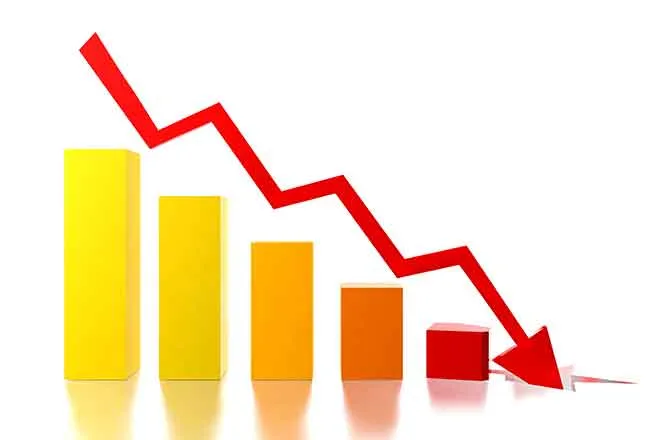
7 Key Retirement Milestones Everyone Should Know About
© Pogonici - iStock
(BPT) - Retirement can seem like a very distant destination in your early working years. However, as you age, that once distant destination starts to become more real. As you enter your 50s you can really start to think about how much you have saved and how that will translate into retirement income. You can also start to better understand the idea of allocating part of your retirement nest egg to guaranteed income based on your calculation of how much pension income and Social Security you will receive. Also critical during this final phase of working is understanding the key retirement milestones and how they will impact your ability to retire.
The following are the critical retirement milestone ages:
Age 55
If you are fortunate enough to consider the possibility of an early retirement, attaining age 55 is a critical date since you can start withdrawing from your 401(k) without the application of the 10 percent penalty tax applicable to premature plan distributions. This exception from the general applicability of the penalty tax, however, depends on you retiring from the company sponsoring your 401(k) plan during or after the year you reach age 55. You cannot continue to work at the company and decide you want to start using your 401(k) assets at age 55. In that circumstance, the 10% penalty tax will still apply.
Age 59 1/2
At age 59 1/2 you are no longer subject to the 10 percent penalty tax for premature withdrawals on all your retirement assets, such as your IRAs, 401(k) or annuities. Therefore, for many this is really the earliest that one can consider retirement as a possibility. Of course, retirement at age 59 1/2 will increase the length of your retirement and the risk that you will outlive your assets.
Age 62
At age 62 you become eligible for a reduced Social Security benefit. In terms of managing your guaranteed income for retirement, in general you will be better served to not start taking Social Security at such a young age since the benefit will continue to grow. Only those with a shortened life expectancy should consider starting Social Security benefits at this age. And even someone with a shortened life expectancy might consider delaying benefits if married, since turning on benefits early will reduce a surviving lower earning spouse’s benefit. Unfortunately, the reality is many individuals do turn on their benefits at age 62, either because they have not saved enough for retirement or because they want to start getting money back from the system they have contributed to over the years.
Age 65
Age 65 is a critical year for considering retirement since you will become eligible for Medicare. Prior to age 65, retirement requires you to consider the cost of paying for your own health care insurance, which can be a very costly proposition. This health care analysis gets more complicated if you have a spouse who is not working and has not attained age 65 when you do, since you will need to consider the cost of health insurance for that spouse until he or she attains age 65. While the Affordable Care Act (ACA) has helped ensure that you can obtain health insurance regardless of your medical condition, the cost of such health insurance remains a significant deterrent to those considering retiring before Medicare eligibility. Also, as this is written, Congress is planning to repeal and replace the ACA, and you will need to understand the replacement plan and how that impacts health care planning for those who are not Medicare eligible.
Age 66-67
At this age, you will become eligible for full Social Security benefit payments, and not the reduced payment you can take at age 62. The full retirement age has been raised over time and varies depending on your year of birth. For those born from 1943 through 1954, age 66 is the full retirement age. For those born in 1955 through 1959, the full retirement age is 62 plus 2 months for each year. For example, someone born in 1955 has a full retirement age of 62 and 2 months, and someone born in 1958 has a full retirement age of 66 and 8 months. For those born in 1960 or later, the full retirement age is 67. Bear in mind that while attaining the full retirement age allows you to take an unreduced Social Security benefit, it does not maximize the benefit payment.
Age 70
Age 70 is the delayed Social Security benefit age, or when you must start taking your Social Security payments. By delaying to age 70 you can increase your full retirement age benefit by 8 percent a year from your full retirement age. Given that Social Security is an annuity that pays you for your lifetime, and the benefit itself is increased by inflation costs each year, the increase in benefit payments from the full retirement age to age 70 can have a material impact on your benefit payment in future years. Maximizing Social Security should be your first consideration when thinking about how to ensure that your assets last as long as you do. Unfortunately, many nearing retirement do not understand the importance of maximizing this benefit, from an insurance perspective, and take the reduced payout at age 62 or at the full retirement age.
Age 70 1/2
At age 70 1/2 you must start taking Required Minimum Distributions, or RMDs, from your retirement assets such as your 401(k) or IRA. Your RMD amount is determined by an IRS table, which effectively requires you to take an increasing percentage of your assets. The idea is that you will be forced to liquidate your account gradually over your lifetime. For example, at age 71 the table requires you to take out around 3.77 percent of your account value, determined on Dec. 31 of the year prior to the RMD withdrawal. At age 80 you must take out around 5.35 percent. At age 90 you must take out around 8.77 percent. You have a choice for the year in which you attain 70 1/2 to take your first RMD amount in that year or defer the distribution to before April 15 of the following year. Keep in mind that if you do defer this first RMD amount you will have to take two RMD amounts in the following year. You may want to consider carefully whether this makes sense since you could be increasing your overall tax liability.
RMDs are not required from a Roth IRA but are required from any funds you have in a Roth account in an employer plan. You may want to consider rolling funds, for example, from a Roth 401(k) to a Roth IRA, if you want to eliminate RMD requirements on these funds. You should know, however, that the time you have invested in the Roth 401(k) does not carry over to the 5-tax-year period for income tax free withdrawals from a Roth IRA. So, if that is part of your future strategy, you may want to open a Roth IRA ahead of time to start the 5-tax-year clock running, which could include making a Roth IRA contribution or converting some traditional account assets to a Roth IRA. Once the 5-year-clock has run it applies to all future contributions, even if a particular contribution has not been in the account for 5 years.
The above analysis of retirement milestone ages highlights the importance of delaying your retirement as long as you can. Delaying your retirement ensures that you will not be subject to the 10 percent penalty tax on premature distributions from retirement plans and IRAs, that you will have affordable health care coverage under Medicare, and that you will maximize the Social Security lifetime benefit payment. Importantly, it also reduces the length of your retirement which, of course, increases the likelihood that you will be able to make your retirement assets last as long as you live.

















